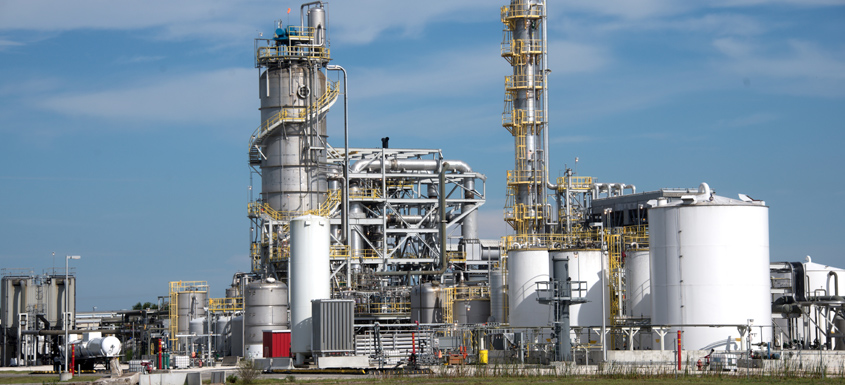The 2021 Nobel prize for chemistry was awarded to Benjamin List and David MacMillan, who independently discovered organocatalysts about 20 years ago.
These are relatively simple organic molecules that are generally cheaper and less toxic than metal-based catalysts, which are used, for instance, in the “cracking” of crude oil to produce petrochemical products at high temperatures and pressures. The inspiration for organocatalysts came from observation of the natural catalytic processes used by enzymes. About 75,000 different enzymes are thought to exist in the human body alone, operating at atmospheric pressure and 37 °C. Each enzyme is designed for a specific chemical reaction; they have been compared to keys that unlock specific processes.
 David MacMillan (left) and Benjamin List share the 2021 Nobel Prize in Chemistry for the development of asymmetric organocatalysis. Credit: Princeton University, Sameer A. Khan/Fotobuddy; David Ausserhofer/Max Planck Society/UPI/Shutterstock
David MacMillan (left) and Benjamin List share the 2021 Nobel Prize in Chemistry for the development of asymmetric organocatalysis. Credit: Princeton University, Sameer A. Khan/Fotobuddy; David Ausserhofer/Max Planck Society/UPI/Shutterstock
For several decades, enzymes have been harnessed industrially in fields such as baking, brewing, textiles, food processing, detergents and animal feed production. Over the last 20–30 years, enzymes have found a place in pulp and paper processes as well. Among enzymatic treatments that have been commercialized in the pulp and paper industry are xylanases to help with kraft pulp bleaching, lipases to break down pitch, and various enzymes that work on cellulose and hemicellulose to help processes such as deinking and low-consistency refining.
In the early 1990s, a fungal treatment for wood chips, labelled “biopulping”, was tried out for reducing the pitch content of wood and preventing “blue stain”, caused by growth of a naturally occurring blue-colored fungus. The development came from the knowledge that white-rot fungi are able to decay wood material by secreting enzymes such as peroxidases and laccases. The treatment required a cultivation time of several weeks. A mill-scale trial took place in the woodyard at the newsprint mill in Bear Island, Virginia, and besides the benefits of less pitch and better brightness, there were significant energy savings in the TMP refining process. The long time required to treat the chips, however, was not acceptable in an industrial context, and the technology was not pursued further.
A lot of work took place to develop enzymes to produce cellulosic ethanol as a drop-in transportation fuel, mostly from agricultural biomass but also from some hardwoods, in the early 2000 and 2010s, with the help of government incentives. One of the largest producers, Abengoa, had an alliance with the enzyme producer Dyadic for one of the most difficult steps: converting the biomass into sugars. After avoiding insolvency in 2016 by restructuring its debt, Abengoa filed for bankruptcy in February 2021. While this experience helped to reduce the cost of industrial production of enzymes on a large scale, one of the lessons learned from this is that it is difficult for a relatively new technology to compete with a commodity product with volatile pricing such as transportation fuel. It is a less risky strategy to develop higher-value products with smaller markets.
In 2008, a small Finnish company called Metgen (an acronym for Mastering Enzyme Technologies and Genetic ENgineering) was founded, with a mission to “empower industries to maximize the value out of biomass”. Working with the Bio-Based Industries Consortium, a public-private partnership with the European Union that invested €3.7 billion on bio-based innovation between 2014 and 2020, Metgen has successfully developed several specialized enzymatic treatments for biomass treatment processes. This has led not only to enzyme cocktails that can achieve the TMP energy reduction shown by biopulping 30 years ago with industrially compatible treatment times, but enzymes that help with hydrolysis, sugar conversion, lignin depolymerization and many other processes required to create a true biorefinery where biomass is the raw material to make a range of chemical products and polymers.
It took millions of years to form oil from dead biomass, and since the mid-1800s we have been using up these reserves for energy and petrochemical-based products. When this inheritance is spent, we will have little choice but to use sustainable biomass as a raw material if we want to enjoy the same products. The harnessing of enzymes from nature and from genetic engineering to unlock the various processes required for biorefinery operation will not only enable this, but will reduce the energy-intensive extraction of metals for catalysis currently required for petrochemical refineries. Expect to hear more about enzymatic biomass treatments in the future!
 Martin Fairbank, Ph.D. Martin Fairbank has worked in the forest products industry for 31 years,
Martin Fairbank, Ph.D. Martin Fairbank has worked in the forest products industry for 31 years,
including many years for a pulp and paper producer and two years with
Natural Resources Canada. With a Ph.D. in chemistry and experience in
process improvement, product development, energy management and lean
manufacturing, Martin currently works as an independent consultant,
based in Montreal. He is also an author, having recently published
Resolute Roots, a history of Resolute Forest Products and its
predecessors over the last 200 years.
Martin Fairbank Consulting
Industry Experience
- Pulp and Paper Technology
- Materials Recycling
- Biorefinery Development
- Manufacturing
- Government Subsidy Programs
Services
- Technical Writing
. White Papers
. Grant Applications
. Explain technical concepts - Scientific Editing
. Review of articles for publication - Project Assessment
. Evaluation of Technologies
. Project evaluation for funding agencies - Pulp & Paper
. Conventional and emerging technologies













